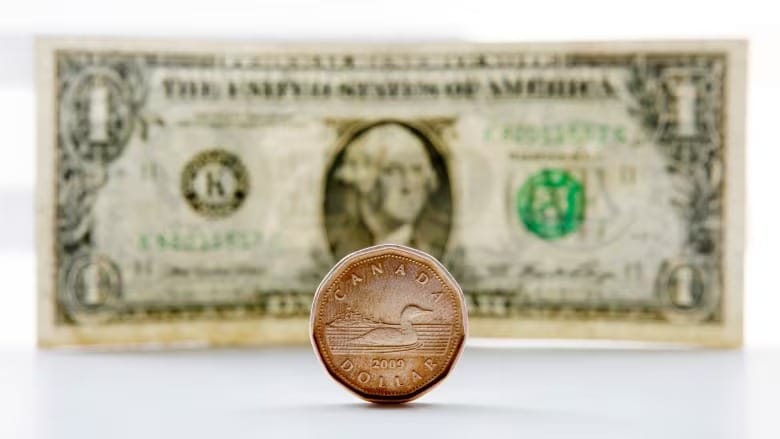Will the Canadian dollar slip below 70 cents US?
Loonie's long, slow decline has picked up speed since Trump's re-election

The Canadian dollar has reached its lowest level in five years, outside the economic disruptions caused by the COVID-19 pandemic. Experts warn that the currency, commonly referred to as the loonie, may decline further.
"I wouldn't be too shocked if we were to get below 70 cents [US] and even perhaps all the way down to 68 cents at some point," said Karl Schamotta, a chief market strategist specializing in financial payments.
The loonie has been on a steady downward trajectory since mid-2021, but its decline accelerated recently following the re-election of Donald Trump in the United States. The U.S. dollar gained strength against nearly all major currencies as Trump promised tax cuts, deregulation, and significant tariffs on imports. Given that 75% of Canada’s exports go to the U.S., this has added pressure on the Canadian dollar.
"The market momentum is clearly against the Canadian dollar right now. And, you know, that market momentum does tend to build ahead of the inauguration date when new presidents take their office," Schamotta explained.
Economic Implications for Canada
A weaker Canadian dollar affects the economy in several ways. Imported goods become more expensive, increasing costs for Canadian consumers. On the other hand, exporters benefit as they are paid in U.S. dollars, which translate into higher revenues when converted.
Paul Colborne, president and CEO of Surge Energy, emphasized the importance of currency fluctuations for his company. Surge Energy, operating primarily in Alberta and Saskatchewan, produces about 24,000 barrels of oil daily.
"For every penny that the dollar goes up or down, it affects annual cash flows [by] $7 million a year, so we watch it very closely," Colborne noted.
Currently, North American benchmark crude is priced at around $71 USD per barrel. With the loonie trading at approximately 70 cents USD, companies like Surge are reaping significant benefits. "Today, Surge is getting about $97-$98 Canadian per barrel for our oil, which is a very attractive price," Colborne said.
The weakened loonie is advantageous not only for energy companies but also for industries like automotive parts, grain, and lumber, which see similar boosts in profits. However, the downside is that Canadians will face higher prices for goods imported from the U.S., such as gasoline and food.
"It almost automatically leads to higher gasoline prices. It can filter right into food prices because much of the food that we buy now is imported or has to compete internationally," said an economist, highlighting the inflationary pressures Canadians are already experiencing.
Historical Context and Current Challenges
The Canadian dollar was once stronger than the U.S. dollar, trading between $1.05 and $0.95 USD from 2010 to 2014 when oil prices were high. However, the drop in oil prices in 2015 caused the loonie to plummet. While the currency showed some resilience during the initial stages of the pandemic, inflation, rising debt, and government spending soon began to weigh it down.
"We are one of the most interest rate-sensitive economies in the world. We've been hit hard by the rise in inflation and interest rates in particular," another expert noted.
The U.S. economy, by contrast, has expanded in recent years, whereas Canada's economic growth has stagnated. Schamotta pointed to factors such as higher borrowing costs, low commodity prices, weak business investment, and poor productivity as contributing to Canada’s economic challenges.
Beyond the economic impact, the loonie’s value also has a symbolic effect. "People tend to see the currency value as a sort of national virility symbol," Schamotta said, adding that a low dollar often generates public disappointment.
Broader Implications for Canadians
Colborne argued that the low dollar reflects broader issues in the Canadian economy, which he attributes to government policies that involved excessive spending and money printing. "The really sad thing is, for me and you and the rest of Canadian citizens, our standard of living has dropped 35 to 40 per cent versus the United States in the last eight years," he stated.
The weakening loonie underscores deeper concerns about Canada’s economic direction and its impact on the daily lives of Canadians. It also shapes public perceptions of the policymakers tasked with addressing these challenges.





